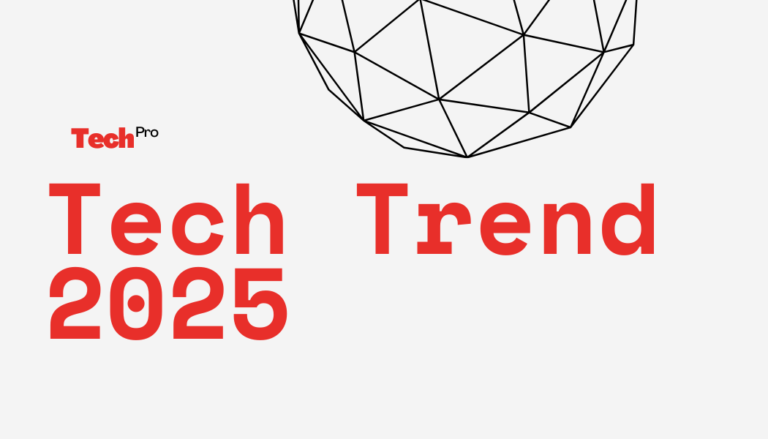-
Arif Uz Zaman Badhon
- Published Date:

Share This
Technology is evolving at an unprecedented rate, and 2025 is set to be a groundbreaking year in various domains. From Artificial Intelligence to Quantum Computing, technological advancements are revolutionizing industries and shaping the digital future. In this blog, we will explore the top tech trends that are poised to redefine the technological landscape.
1. Agent AI: The Next Evolution of Artificial Intelligence
Overview
Agent AI refers to autonomous artificial intelligence systems that can perceive, reason, learn, and act without direct human intervention. Unlike traditional AI models, Agent AI integrates reinforcement learning, self-improvement mechanisms, and real-time decision-making to perform tasks efficiently.
Applications
- AI-driven Virtual Assistants: Next-gen AI assistants with contextual understanding.
- Autonomous Systems: AI-driven robotics and self-operating vehicles.
- Financial Market Predictions: AI Agents for stock trading and risk analysis.
Example: Reinforcement Learning in Agent AI
import gym
import numpy as np
from stable_baselines3 import PPO
# Create an environment
env = gym.make("CartPole-v1")
# Train an AI agent using Proximal Policy Optimization (PPO)
model = PPO("MlpPolicy", env, verbose=1)
model.learn(total_timesteps=10000)
# Test the trained model
obs = env.reset()
for _ in range(1000):
action, _ = model.predict(obs)
obs, reward, done, info = env.step(action)
if done:
obs = env.reset()
This simple AI agent learns to balance a pole using reinforcement learning, demonstrating the foundational concept of autonomous decision-making in Agent AI.
2. Extended Reality (XR): Merging Digital and Physical Worlds
Overview
Extended Reality (XR) is an umbrella term covering Virtual Reality (VR), Augmented Reality (AR), and Mixed Reality (MR). XR applications are expanding into healthcare, education, gaming, and industrial simulations.
Applications
- Remote Work & Collaboration: Virtual office environments.
- Healthcare & Surgery Simulation: XR-assisted medical training.
- Immersive Education: AR-powered interactive learning platforms.
Example: Creating a Simple AR Experience Using WebXR
<html>
<head>
<script src="https://aframe.io/releases/1.2.0/aframe.min.js"></script>
</head>
<body>
<a-scene>
<a-entity camera look-controls wasd-controls></a-entity>
<a-box position="0 2 -5" color="#4CC3D9"></a-box>
</a-scene>
</body>
</html>
This example showcases a simple AR cube rendered in an immersive environment using WebXR.
3. Spatial Computing: The Next-Gen Human-Computer Interaction
Overview
Spatial computing integrates AI, IoT, and XR to create a seamless interaction between the digital and physical worlds. It enables gesture-based control, holographic projections, and digital twins.
Applications
- Smart Cities: AI-driven spatial analytics for urban planning.
- Retail & E-Commerce: Gesture-based shopping experiences.
- Industrial IoT: Real-time spatial Data visualization.
Mathematical Concept: Transformation Matrix for Spatial Computing
Spatial computing relies on transformation matrices to position objects accurately in a 3D environment. A simple transformation equation is:
P` = T * R * S * P
Where:
- P is the original point.
- T is the translation matrix.
- R is the rotation matrix.
- S is the scaling matrix.
- P` is the transformed point.
4. Quantum Computing: Breaking the Limits of Classical Computing
Overview
Quantum computing leverages quantum mechanics to process complex calculations exponentially faster than classical computers. The fundamental unit is the qubit, which operates on the principles of superposition and entanglement.
Applications
- Cryptography & Security: Breaking classical encryption algorithms.
- Drug Discovery: Simulating molecular structures at quantum levels.
- Optimization Problems: Solving complex logistics and supply chain challenges.
Example: Quantum Circuit Simulation
from qiskit import QuantumCircuit, Aer, transpile from qiskit.providers.aer import AerSimulator # Create a quantum circuit with 2 qubits qc = QuantumCircuit(2) qc.h(0) # Apply Hadamard gate to the first qubit qc.cx(0, 1) # Apply CNOT gate # Simulate the quantum circuit simulator = AerSimulator() compiled_circuit = transpile(qc, simulator) result = simulator.run(compiled_circuit).result() print(result.get_counts())
This circuit creates an entangled state, a key concept in quantum computing.
5. Blockchain & Decentralized Systems
Overview
Blockchain technology enables secure, decentralized transactions without intermediaries. Smart contracts and DeFi (Decentralized Finance) are transforming the financial sector.
Applications
- Decentralized Finance (DeFi): Eliminating banking intermediaries.
- NFTs & Digital Ownership: Immutable ownership records.
- Supply Chain Transparency: Traceable transactions.
Example: Writing a Simple Smart Contract in Solidity
pragma solidity ^0.8.0;
contract SimpleContract {
uint256 public value;
function setValue(uint256 _value) public {
value = _value;
}
}
This smart contract allows setting and retrieving a value on the Ethereum blockchain.
6. Data Science & AI-powered Analytics
Overview
Data Science leverages AI, ML, and big data analytics to extract actionable insights. Deep learning models are revolutionizing predictive analytics and automation.
Applications
- AI-driven Business Intelligence: Enhancing decision-making.
- Healthcare Predictive Analysis: Diagnosing diseases from medical data.
- Fraud Detection: Analyzing patterns to prevent cyber threats.
Example: Machine Learning Model for Prediction
from sklearn.ensemble import RandomForestClassifier from sklearn.model_selection import train_test_split from sklearn.datasets import load_iris # Load dataset iris = load_iris() X_train, X_test, y_train, y_test = train_test_split(iris.data, iris.target, test_size=0.2) # Train model clf = RandomForestClassifier() clf.fit(X_train, y_train) # Predict predictions = clf.predict(X_test) print(predictions)
This demonstrates AI-driven predictive analytics using a Random Forest classifier.
Conclusion
The convergence of these cutting-edge technologies is shaping an intelligent, connected, and decentralized future. As we move into 2025, embracing these trends will be crucial for businesses and individuals looking to stay ahead in the digital revolution.